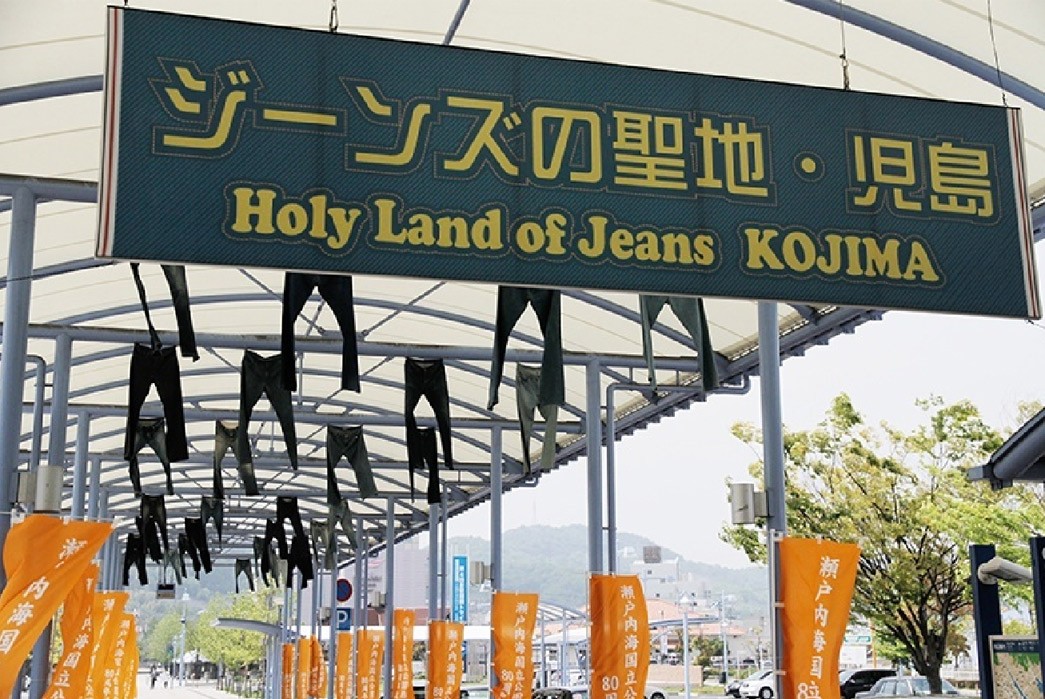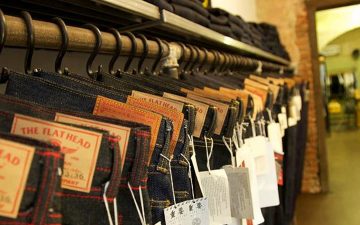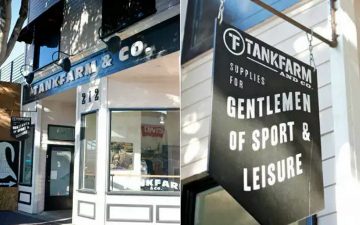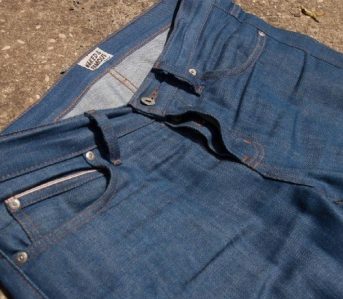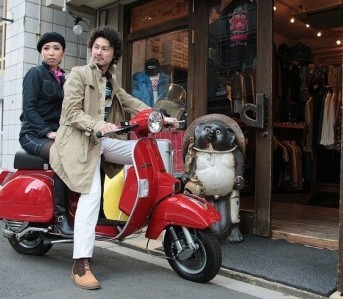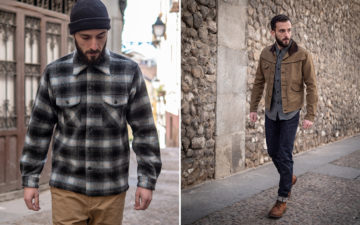Most denim heads understand that Japanese denim comes from Okayama. Maybe not that many know about Kojima, and probably even less are familiar with Jeans Street. We recently met with Tatsushi Tabuchi, General Manager at Rampuya & Co, mother company of Momotaro Jeans and Japan Blue Jeans, who gave us an exclusive tour of Kojima’s Jeans Street.
Since there is little information available in English about the street, we’ll start with a little historical background of Kojima before giving you concrete details such as transportation, opening hours, stores present etc. Please note that we won’t write about all the stores present. We’ll focus on the stores that drew our attention instead. For a complete list of the stores please refer to the map below.
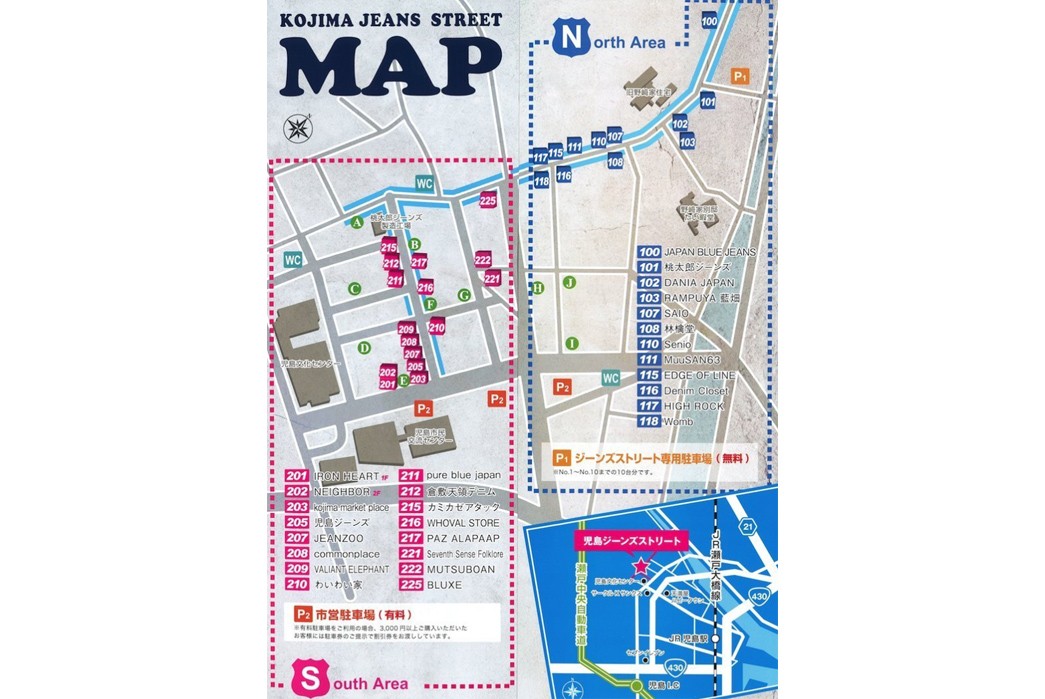
Kojima Jeans Street map
The history of Japanese denim
Unless you read Japanese, it’s tough finding information on the history of Japanese denim before the 50s. In fact the roots of Japanese denim go as deep as the 16th century. Back then, the Daimyo of the Okayama prefecture, Ukita Hideie, started large construction projects, including what’s called “land reclamation from sea”. It consists in getting rid of the water from shallow areas to create new lands. That’s how Kojima, literally “small island”, was born. Since you can’t cultivate rice in salty water, people started cultivating cotton, which is salt resistant.
From then the Okayama prefecture gained a strong reputation for its production of sanada-himo (traditional ribbons), socks, and cloth used for kokura-obiji (traditional kimono belt) and hakama (traditional Samurai pants). Then in the late 19th century, foreigners started coming to Japan, bringing in a new fashion. Eventually Japanese traditional clothes became less popular. The demand decreased, threatening thousands of jobs. The Okayama textile industry had to look for something else to produce.
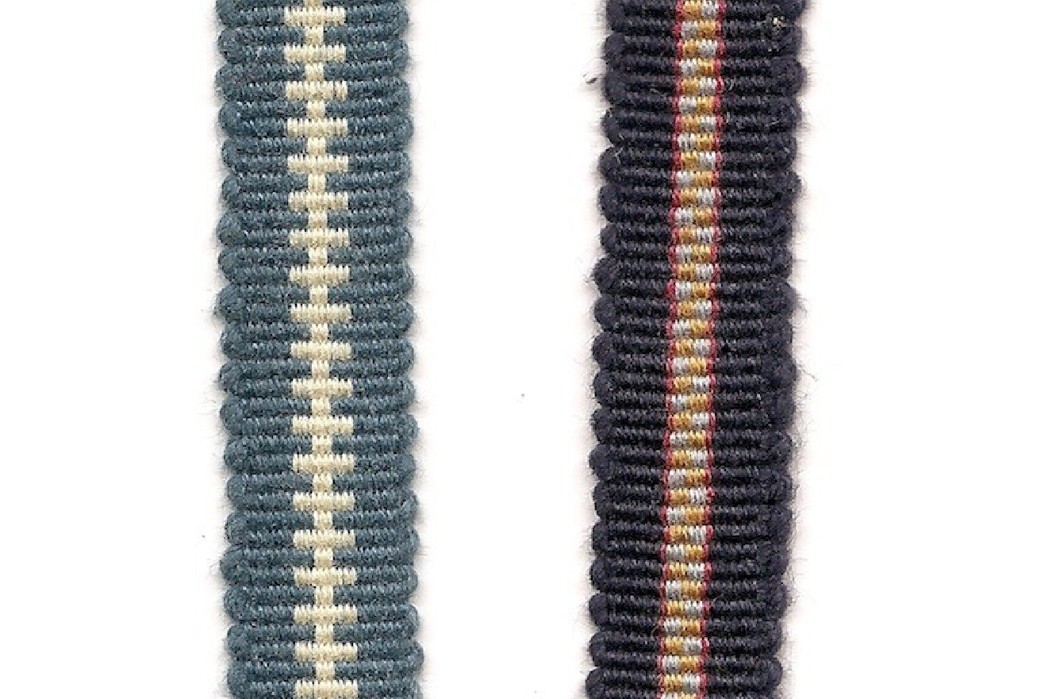
Sanada himo, courtesy of the blog Japanese Textiles.
Fortunately, the end of the 19th century is also when Japanese universities implemented uniforms, shortly followed by the whole scholar system. Since school uniforms aren’t following any trends, this was the safest option. Then after WWII came another threat: synthetic fiber. Again, they needed to find something else to produce. Since American soldiers had brought denim with them during WWII, and since denim is made of cotton, that’s the product the industry went for, leading to the birth of Big John in 1965.
What about Jeans Street?
Until around 40 years ago, Kojima was an animated city, and Jeans Street–originally called “Ginza Street”–was packed with merchants and shoppers. With the rural exodus, youngsters started leaving town, heading for bigger cities like Osaka or Tokyo, which turned the small neighborhood into what the Japanese call a shutter town. That’s until jean makers gathered and took the initiative to create Jeans Street, a human project that gives life back to a deserted street, providing hundreds of people with jobs!
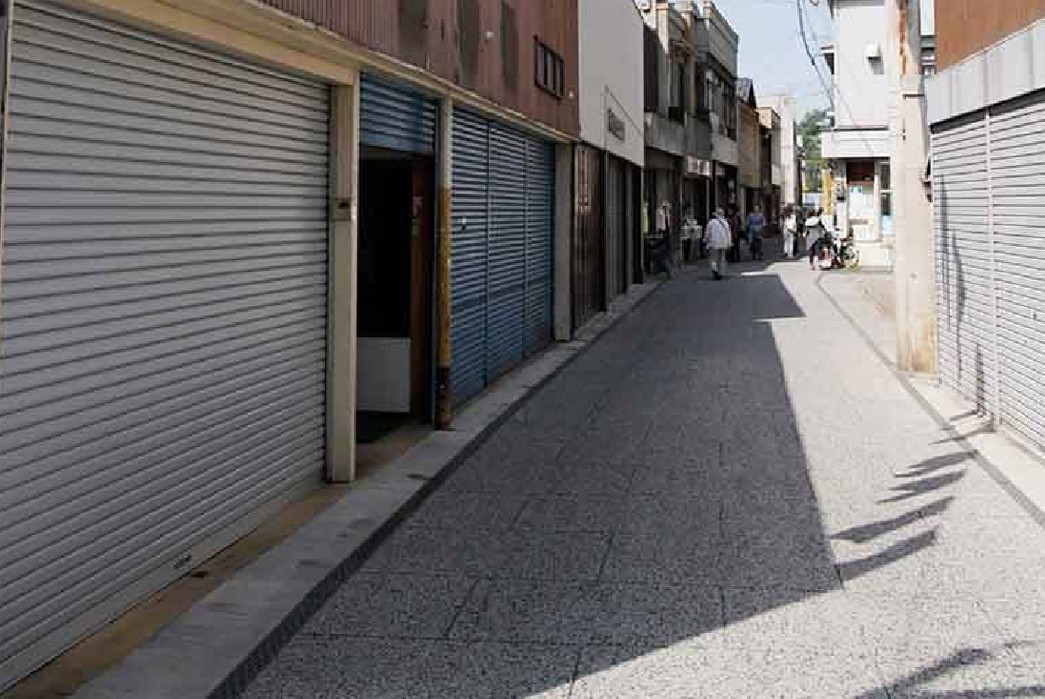
A Japanese shutter town
Transportation
Let’s assume you don’t live in Japan, and even if you do, let’s assume you don’t own a car. First step: go to Kojima Station. If you’re staying at either Osaka, Okayama, or Kurashiki, Japanese trains are well organized and indications are very clear so that shouldn’t be too complicated.
When you arrive at Kojima station, you have two options to go to Jeans Street. Near from the exit you will see a bunch of cabs. Take one and you’ll get to the street within 10 minutes for around $12. Or, if you want to enjoy the full experience you should ride the Jeans Street Bus. For around $1.60, go to the stop called “Nozakikekyuutaku” (野崎家旧宅), located in Jean’s Street’s North Area. Be careful with the timetable as the bus only runs from 9:40AM to 3:50PM. For more info check the schedule here.
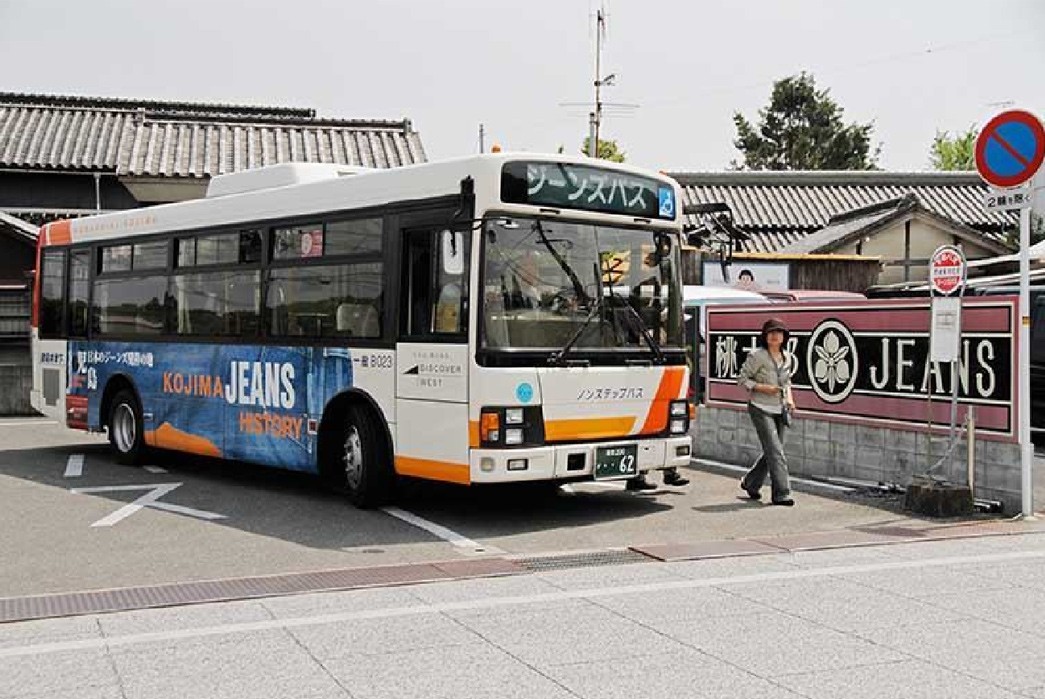
The Kojima Jeans Street Bus.
Kojima Station
When you arrive at Kojima station, the tour has already begun. Everything in Kojima is dedicated to jeans, and the numerous decorations you will see when you arrive are a good warm up before you get to the actual street.
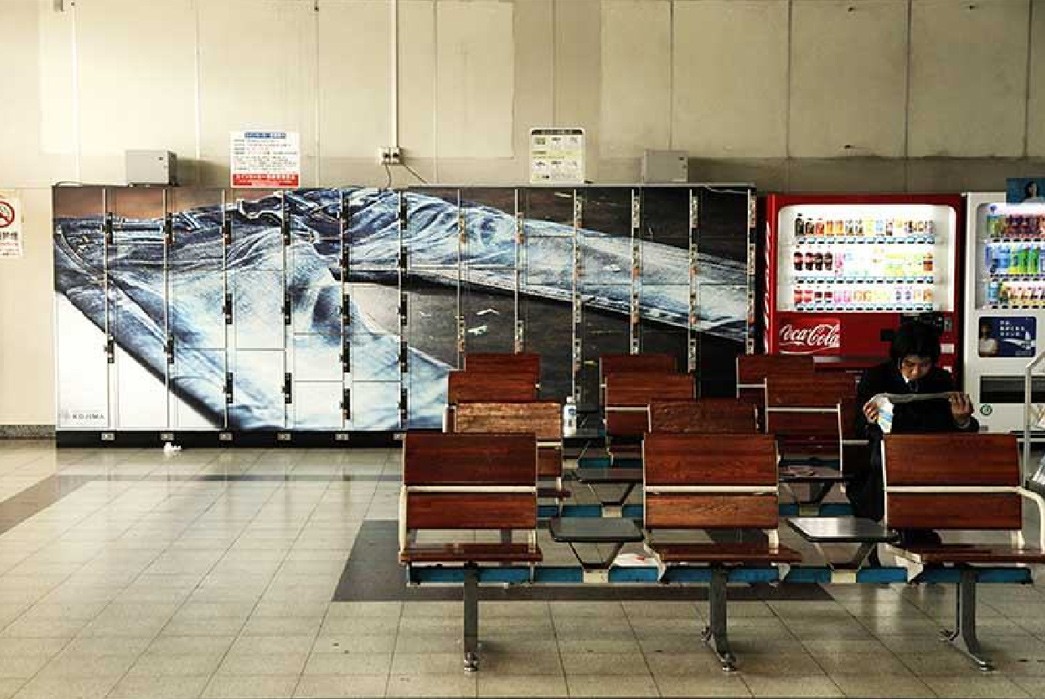
The Kojima train station lockers.
Jeans Street: North Area
Momotaro Jeans & Rampuya (101)
Momotaro Jeans
Kurashiki-shi Kojima Ajino 1-12-17
Open from 10AM to 7PM
Closed on December 30 and 31 and January 1
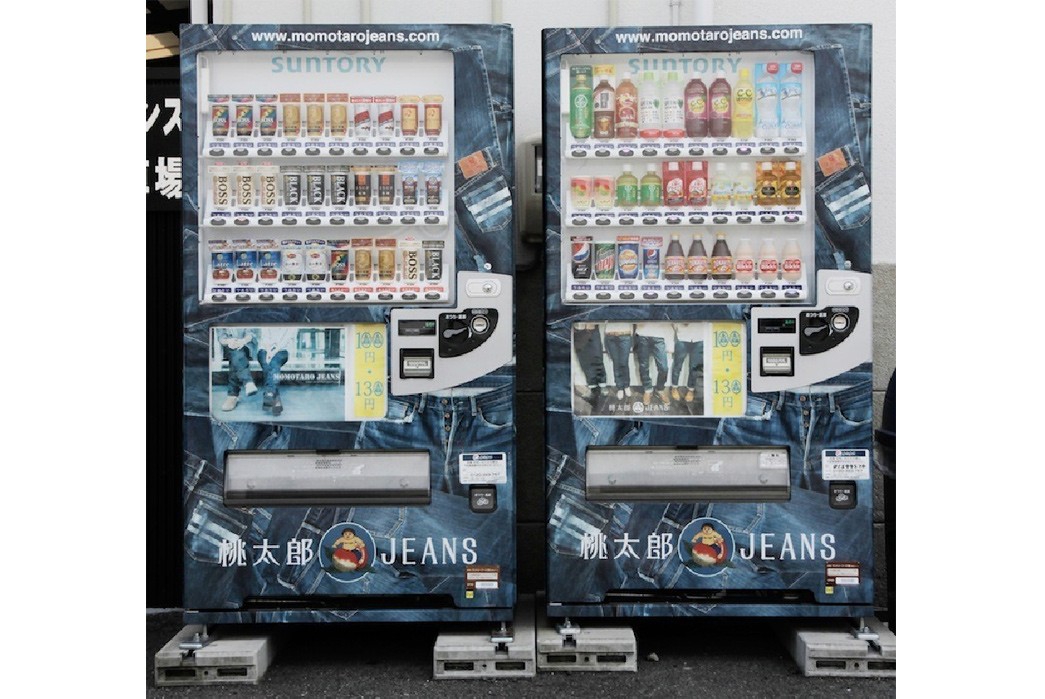
Momotaro Jeans vending machines
It’s no surprise that the tour starts with local champion Momotaro Jeans, the first store you see when you get off the bus. Everything in the street is dedicated to denim, even the vending machines next to the stores have been decorated after the brand.
The store is stretched between three sections. What you first see when getting inside the store is the Momotaro Jeans section. The second and third sections are dedicated to indigo label Rampuya, one of the labels by the same company that makes Momotaro and Japan Blue Jeans. You will find there, among other things, their $2,000 all-natural denim jeans, accessories, and traditional kimonos.
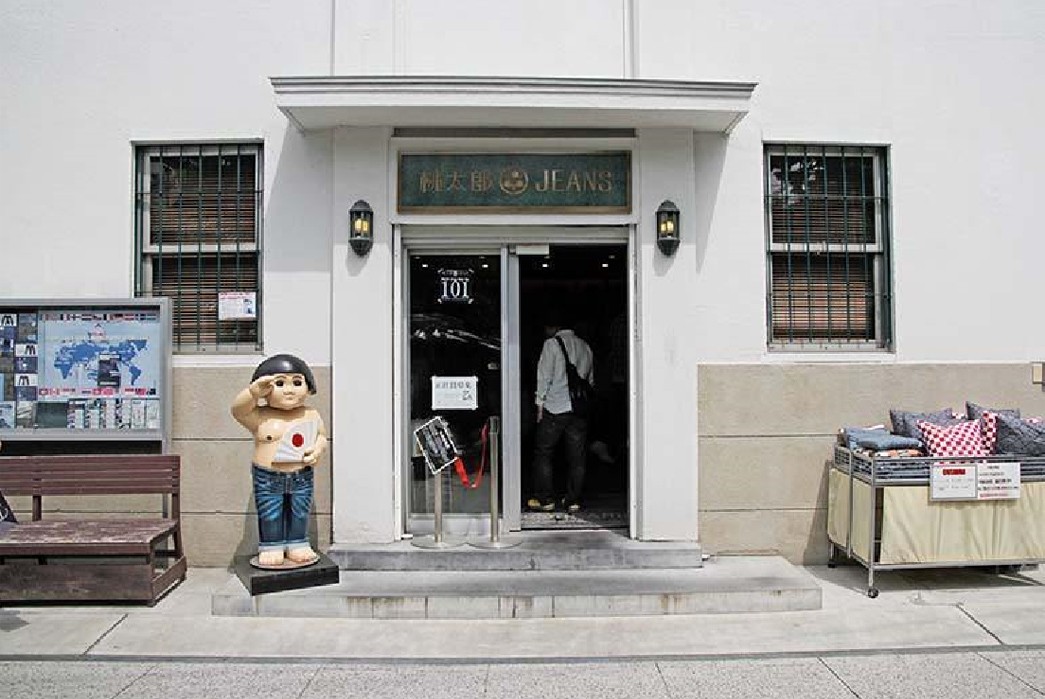
Momotaro Jeans shop facade
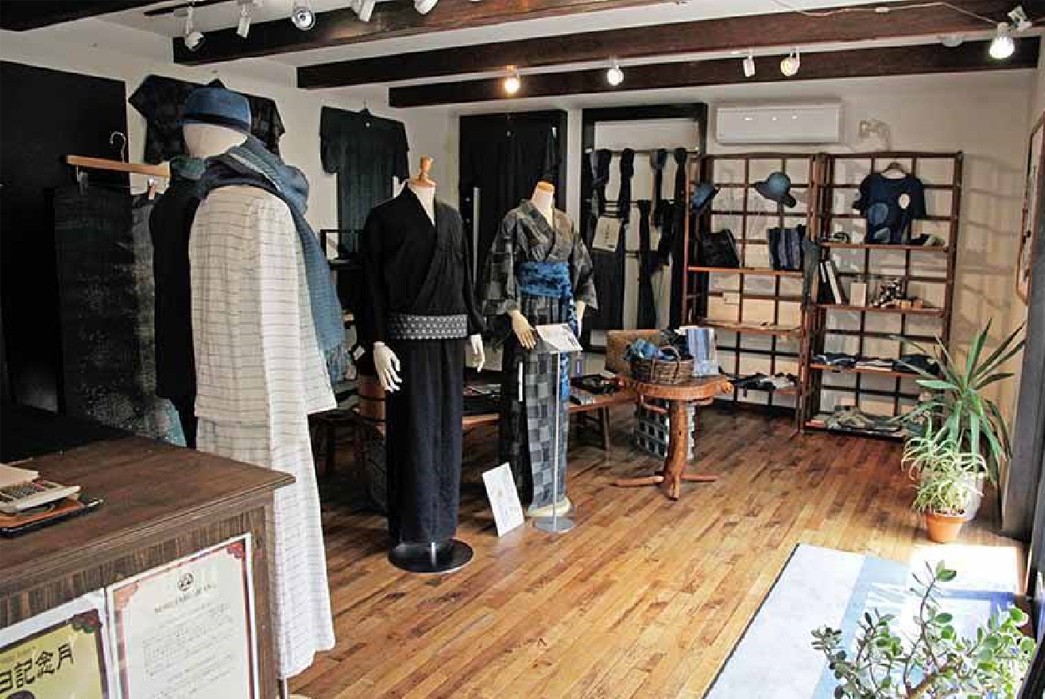
Third section of the Momotaro Jeans shop dedicated to anything indigo by Rampuya.
Japan Blue Jeans (101)
Japan Blue Jeans
Kurashiki-shi Kojima Ajino 1-14-10
Open from 10AM to 7PM, all year
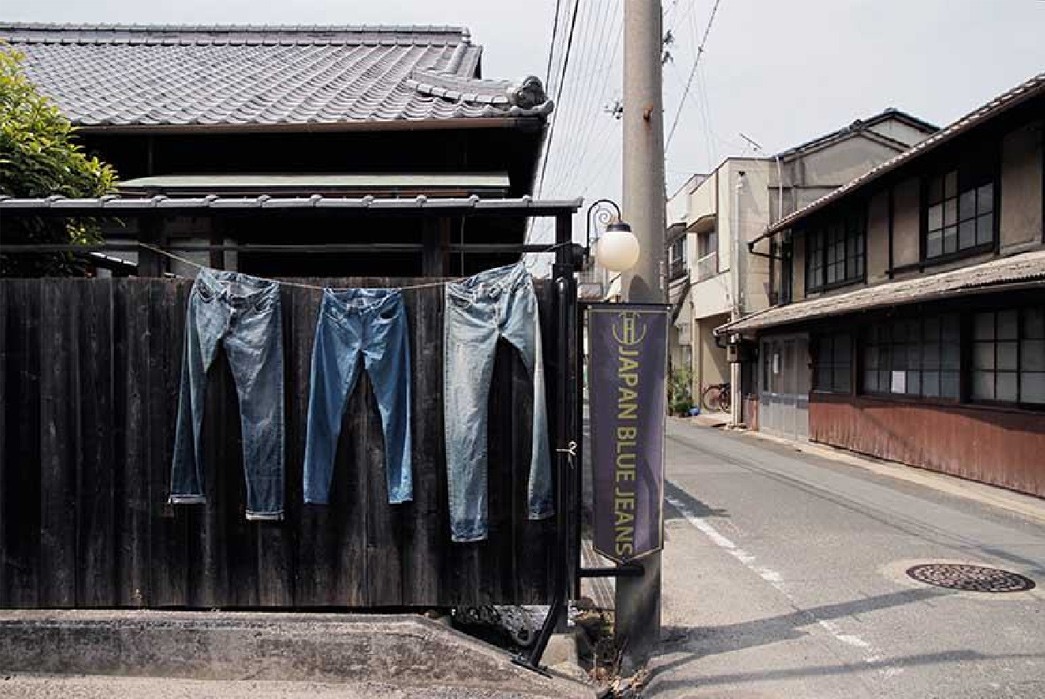
Japan Blue Jeans shop exterior
Next is Japan Blue, often confused with Pure Blue Japan. It’s a brand owned by the same company that makes Momotaro and Rampuya. The concept is slightly different, as it emphasizes more on current fashion and fits, whereas Momotaro is more vintage inspired. The brand focuses almost exclusively on bottoms: jeans or chinos of various shapes and colors. The store is built inside a traditional house and beautifully decorated.
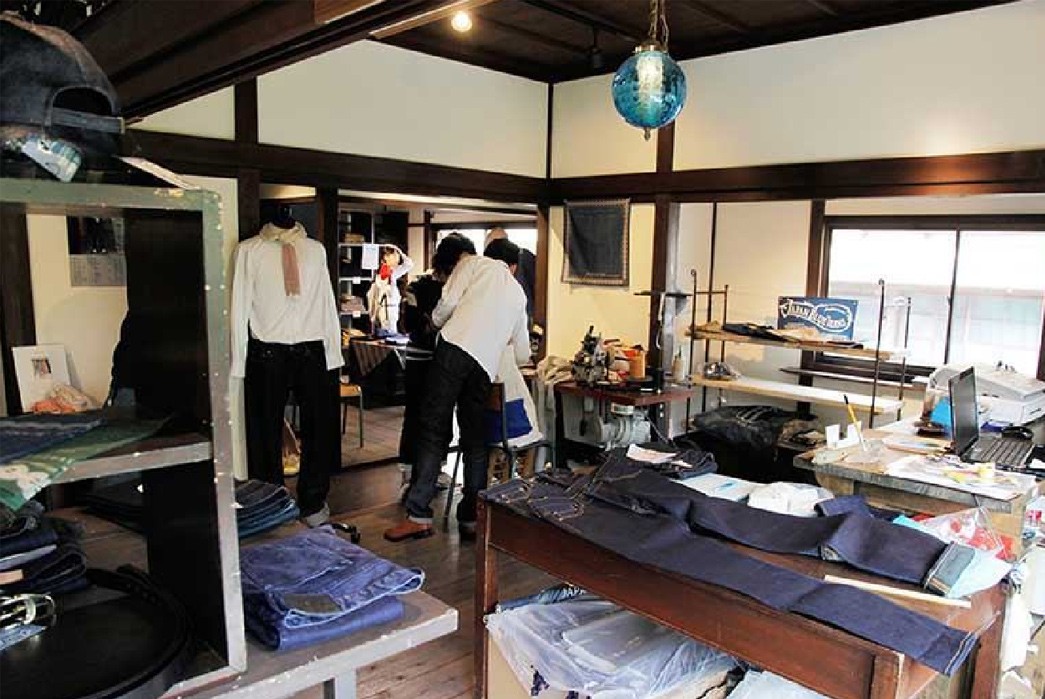
Rampuya Aibatake (103)
Rampuya Aibatake
Kurashiki-shi Kojima Ajino 1-12-10
Only by reservation: +81 (0) 86-473-3670
Closed Sundays
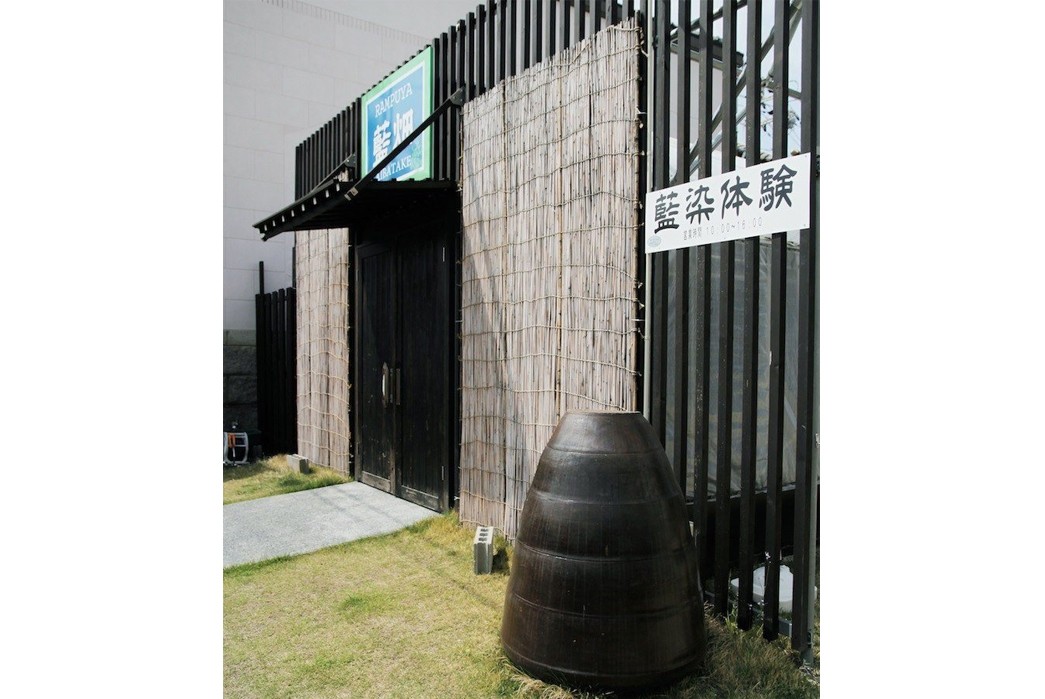
Rampuya also offers an indigo dying workshop near the Momotaro Jeans shop. However, you will need some basics of Japanese as they do not provide any English explanations, and it can get pretty technical… Reservation by phone is required.
AppleDo
AppleDo
Kurashiki-shi Kojima Ajino 1-9-26
Open from 11AM to 6PM, all year
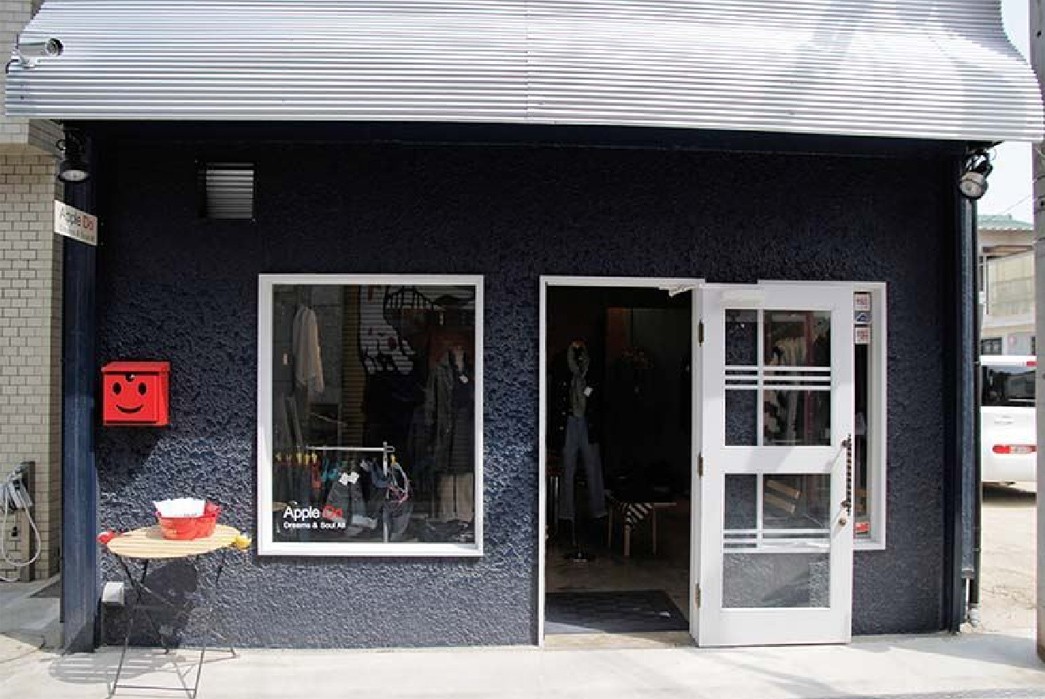
AppleDo store front
For the fathers and husbands, this is a must check, as it has some cool items for women and kids. The assortment isn’t that huge but if you want your partner to wear denim and still look feminine, then you’ll find what you need here. Even if you don’t have kids it’s a cool place to get souvenirs for the parents you know at home.
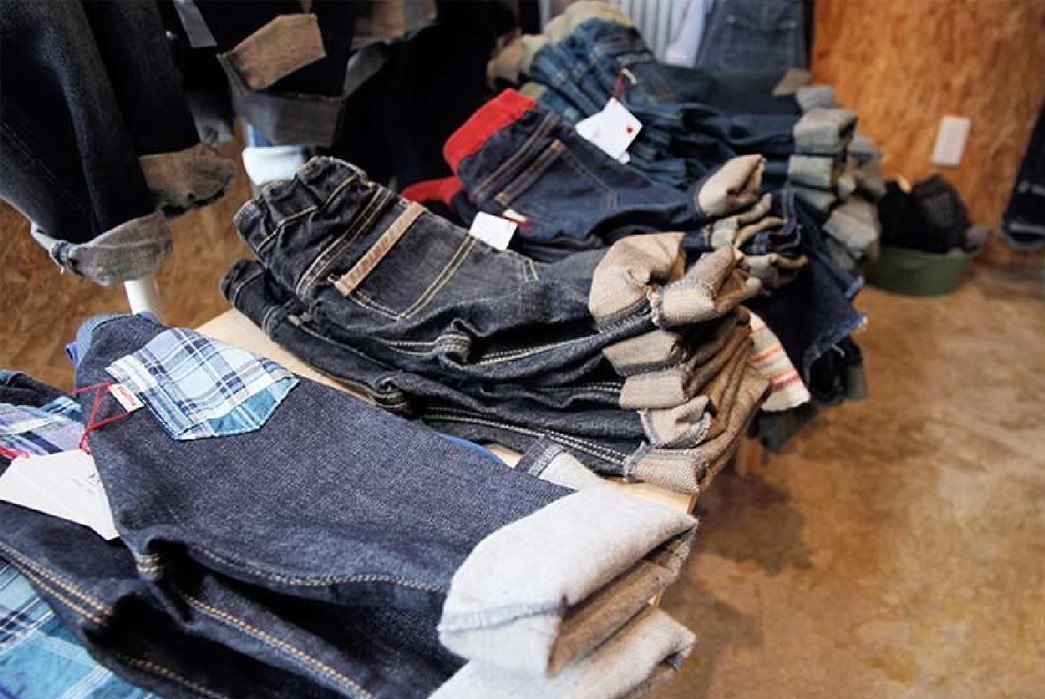
AppleDo kids denim
Denim ice cream
No, don’t worry this ice cream doesn’t taste like denim, in fact it’s blueberry flavored. This is yet another demonstration on how extreme the Japanese can get with their passions. The ice cream shop is operated from the first floor of someone‘s house, so there’s no guarantee they’ll be open when you go, but you can probably count on it during key holidays and tourism peaks of the year such as Golden Week.
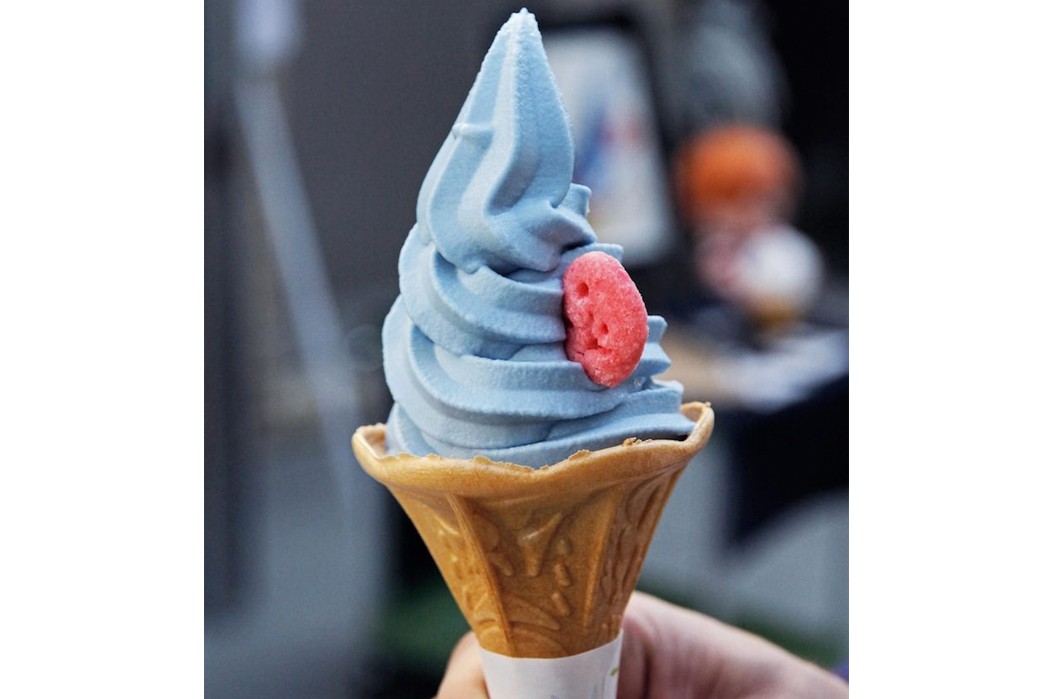
Denim Ice cream
Keep reading with Part II of our guide.
All photos by Yuri Matsuoka.

